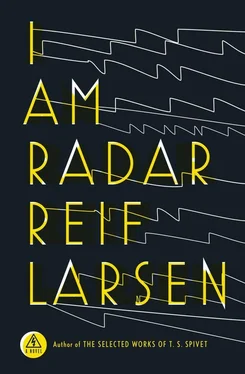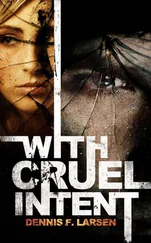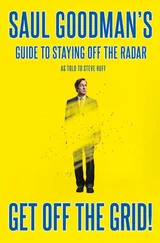She would graduate summa cum laude from Douglass College in 1966, with a B.A. in English, one of the last all-female classes before the college merged with Rutgers. Instead of listening to her conscience and pursuing a professional life of books, she had decided to test her luck in the big city, selling high-end women’s footwear and perfume in a spotless, cathedral-ceilinged department store on Madison Avenue. It was not a good match. It didn’t take her long to realize that success at the job was dependent not on sophistication or her instinctual prowess for predicting trends in the sociocultural zeitgeist but rather on wearing the right kitten heel pumps so as to encourage sexual harassment from the boss. Charlene quit her job — dramatically, fittingly — by throwing a rare bottle of Diorissimo across the store, its shattered remains filling the room with the intense velveteen wash of lily of the valley.
She lived, practically for free, in a grimy fourth-floor walk-up in Hell’s Kitchen, with two twin Dadaist painters named Lila and Vespers. The twins slept all day in the same bed and, from what she could tell, were locked in some kind of ménage à trois with the same man. Their art, which they worked on in tandem, involved pasting found objects — scissors, thimbles, shoelaces — onto a canvas, painting these objects white and then creating false labels for each item. “Scissors” became “meatloaf,” and so on. Charlene was not impressed.
Lila and Vespers also frequently enjoyed “expanding their horizons,” as they termed it. Before she met them, Charlene had never even seen a drug. She had drunk in college now and then, but cautiously, for she had never enjoyed relinquishing control, and she sensed her possession of the same gene that had left her aunt in a vodka-fueled stupor in western Pennsylvania. The gene was almost certainly present in her sister Vivienne, as evidenced by her daily succession of postmeridian double martinis.
One evening, Charlene reluctantly tagged along with Lila and Vespers to a party in a Lower East Side basement. The theme was “The Future.” The twins wrapped themselves in tinfoil. Charlene went costumeless. At some point Lila or Vespers — it did not matter which — handed her a tab of acid, which she surprised herself by considering for only the briefest of instants before popping into her mouth. Later that night, on the Brooklyn Bridge, she also tried her first quaalude, or what a man in a mustache said was a quaalude. The night was transcendent, but not because of the drugs — she felt as if she had shed a skin, as if anything was possible now.
As she did with everything, Charlene became very obsessed with getting high. It turned into a game, and then it turned into more than a game. Her parents had reluctantly agreed to supply her with a small monthly allowance until she got “her feet back on the ground.” She returned this favor by spending their money on cheap Spanish wine and various barbiturates and psychedelics, which Lila and Vespers initially supplied her and which she eventually supplied herself via their contact, a boorish fisherman named Vlada, who most likely was not a fisherman at all. She met people at the parties. Those parties . At first she went with the twins and then she went alone. It was just that if you dipped into it, you were utterly consumed. You couldn’t go halfway. Charlene felt that she was a part of something very important, something utterly new. This was New York. This was 1967. As the rest of America continued to button its top button, she howled into the night with artists and beboppers and hippies, tripping down the Bowery, high as a kite, debating the ideas of Sartre and Simone de Beauvoir and Hannah Arendt with anyone who cared to listen. She fell in love. She fell out of love. There were a number of men. There were a number of men with mustaches. There was even one woman. And it was this woman who introduced Charlene to Hazel, which is what she called heroin. In retrospect, this was a horrifically innocent moniker. Charlene had always been terrified of needles, but when she felt the drop for the first time, the warmth that erased inside from out, the seven thousand hands upon her, she realized she had found exactly what she was looking for.
It was wonderful. It was wonderful and wonderful and wonderful, until it wasn’t wonderful anymore. She quickly burned through her allowance. She sold all of her books to the Strand Bookstore save two— A Tale of Two Cities and a recently purchased copy of Anna Karenina upon which she had spilled lukewarm tea. The trouble was that even the drugs did not fully extinguish her systemic neuroses, her tingling desire for order. Each morning, she would choose which way to sequence the pair of books. There were only two options, two dichotomous takes on the world. She rearranged them nonetheless. Each was plausible, but not quite true: Did the city make the woman or did the woman make the city?
Beyond the confines of that shelf, however, the city itself could not be ordered. The tines of disarray would put her to bed each night, gnawing at the recesses of her mind as she lay there sleepless, and they would greet her each morning when she awoke with a splitting headache to the idling motors of graffitied delivery trucks or the wail of police sirens. Soon the drugs were all there was. Every moment in her day was organized around either acquiring them, taking them, or recovering from their effects. Her body was not so much hers as a vehicle that she occasionally tended. Even the twins, who were some of the most unobservant people she knew, began to remark upon her descent.
In November, after vomiting for the fifth morning in a row and fearing some permanent damage, Charlene finally dragged herself to a hospital. The doctor performed some tests and told her she was suffering from a most common condition: she was pregnant.
“What do you mean, pregnant ?” she said.
“Do you want me to draw you a diagram?” he said.
As she was leaving, he looked up from his desk. “If I may,” he said. “You’re now responsible for two people. Everything you put into you, you are also putting into your baby.”
Charlene sat in the kitchen with the twins and the malnourished creeper plant, trying to imagine a theoretical child with each of her ghostly mustached lovers, an exercise that caused her to start hyperventilating.
“It’s no big deal,” said Lila. “We know someone who can fix it.”
“He’s creepy but cheap,” Vespers added. Vespers wore a faux-gypsy rhinestone headband, even while sleeping. It was a convenient clue for telling the two apart.
Lila handed Charlene the number, scrawled on the back of a prescription bottle. “Don’t worry, ShaLa, we’ve both used him,” she said. Charlene had no idea where their nickname for her had come from. They were the kind of people who gave nicknames to mark their territory.
From her lineup of potential progenitors — a shady group whose membership grew the more she thought about the extent of her nocturnal encounters — Charlene could not help but gravitate to one man, hoping against hope that it was he who was the father. His name was T. K. — short for what? She couldn’t remember anymore, or maybe she had never known. T. K., the black boy from St. Paul, Minnesota, with the warm eyes and the learned prairie laugh, no doubt picked up from one of his white foster parents. Mere months after V-J Day, buoyed by the promise of a new era, they had adopted T. K. after hearing his story on the radio: his birth family had perished in a downtown slum fire, and he had survived the blaze by being hurled to safety out of a fourth-story window into the arms of a firefighter. He was six months old.
At least this is what T. K. told Charlene during one of their precious nights together, lying naked in her bed, ankles touching, the twins arguing loudly about Gauguin in the next room. Charlene had imagined his little Minnesotan family — T. K. and his progressive white parents, dressed in down parkas, surrounded by mounds and mounds of snow. He had been first in his class at Humboldt High. Full scholarship to Macalester College. He was one of the smartest people she had ever met, and yet quite clearly sheltered to a fault, for he had been raised on Schubert and Robert Louis Stevenson, had never owned a television, and had never even been out of the state before he left on a bus for Columbia University’s College of Physicians and Surgeons, smack in the middle of Washington Heights.
Читать дальше












